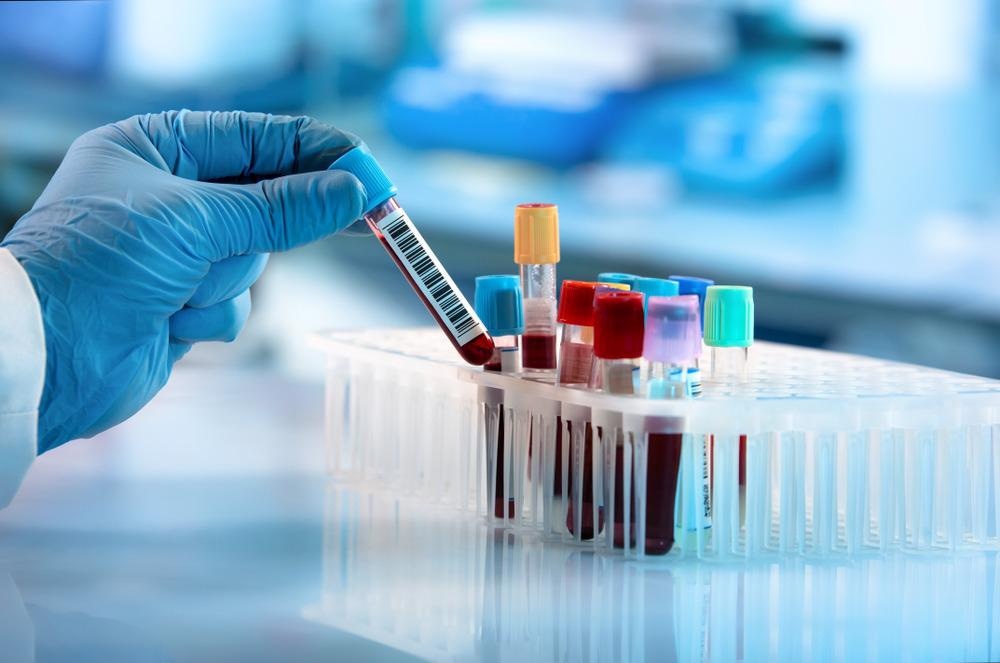Plasmonic nanoparticles have proven to hold significant benefits, increasing their popularity amongst scientists who are keen to advance medicine with nanotechnological innovations. Plasmonic nanoparticles consist of the use of noble metals, which are highly effective for scattering and absorbing light. Modifying nanoparticle size, shape and composition can aid in altering the optical response, spanning different regions of the electromagnetic spectrum, from ultraviolet to visible and near-infrared. There are many applications of these nanostructures, including furthering biomedical research.

Image Credit: angellodeco/Shutterstock.com
Plasmonic nanoparticles can be created through two main approaches, including the bottom-up chemical and top-down approaches. The bottom-up approach results in large-scale synthesis of nanoparticles of various shapes and sizes, which can undergo further modification through functional molecules to increase selective binding. To produce gold nanostructures in this manner, gold salt can be reduced in the presence of a surfactant.
The top-down approach can consist of lithography, such as methods including photolithography, soft lithography, electron-beam lithography, nanoimprinting lithography, and more. These methods enable a more ordered and structured fabrication of plasmonic nanoparticles and a more reproducible approach to the structural properties of these structures.
Beneficial Characteristics of Plasmonic Nanoparticles
Metallic nanoparticles, including gold, platinum, and silver, consist of advantageous characteristics that enable them to have high absorption and scattering abilities in regard to light. Their optical responses can be altered through the modification of their shape, size, and composition via the electromagnetic spectrum, while color can be modified through shifting the absorption and scattering levels.
The tunability of plasmonic nanoparticles and their brightness enable them to be advantageous for molecule tracking, imaging, and detection applications. This would be beneficial for biomedical applications such as research and healthcare as it can aid in identifying molecules of concern in patient samples. Increased sensitivity may help increase patient care, resulting in earlier and more efficient diagnoses.
Suitability for Biomedical Applications
The light scattering abilities of these nanostructures allow them to be easily identified under dark-field illumination and through other sensing techniques. This property increases their suitability for in vitro biomedical applications.
Within research, having this tunability and optical characteristic can aid with creating a new method of detection and imaging, helping identify obscure molecules and providing more concrete information about infectious diseases. Additionally, with the small size of nanoparticles, these nanostructures can be used for natural interaction with cells to understand specific molecules and proteins, which can also be useful for particular diseases.
A significant application of plasmonic nanoparticles lies within its use as a superior, optically stable bioimaging agent for the early diagnosis of diseases. Its photostable characteristic can enable its use as a bio-nanoprobe, further confirming its use as an agent within biomedicine.
Why aren't Gold Nanoparticles Gold?
Plasmon resonance makes gold nanoparticles turn purple. Video Credit: Breaking Taps/YouTube.com
Novel Research
Scientists within the University of California have undertaken research on plasmonic nanoparticles, exploring their ability to detect severe acute respiratory syndrome coronavirus 2 (SARS-CoV-2). Their novel diagnostic method was based on the aggregation of gold nanoparticles to detect a low level of SARS-CoV-2.
This innovative method detected the low concentration of nucleocapsid protein in less than 5 minutes through the naked eye; the team was able to use an optical spectrometer to estimate the viral sample concentration for a more effective diagnosis.
A challenge found by the scientists included previous reports of gold nanoparticle-based sensing methods being limited to small working ranges as well as issues with high concentration detections. However, this can be overcome for more broad applications by optimizing gold nanoparticles via an alteration of the shape, size, and composition of the particles used.
This sensing method can be useful for the current COVID-19 pandemic. It could help detect novel variants of the coronavirus as well as any future viral infections. The tunability and functionalization of plasmonic nanoparticles as an optical detection method can increase its suitability as a promising advancement or alternative for the diagnostic procedures available today.
Additionally, its use for general biomedical applications can also be significant by identifying specific markers for the detection and prevention of infectious diseases. This nanotechnology would be beneficial for both healthcare and research in the future and can aid in understanding and reducing infections that benefit from early detection.
You might be interested this interview: NANO-LLPO: Using Nanomaterials to Heal Wounds.
Further Reading and References
Behrouzi K, Lin L. (2021) Gold nanoparticle based plasmonic sensing for the detection of SARS-CoV-2 nucleocapsid proteins. Biosens Bioelectron, 95:113669. Available at: https://doi.org/10.1016/j.bios.2021.113669
Malhotra, B. and Ali, M., (2018) Plasmonic Nanostructures. Nanomaterials for Biosensors, pp.161-181. Available at: https://doi.org/10.1016/B978-0-323-44923-6.00006-6
Sotiriou, G., (2012) Biomedical applications of multifunctional plasmonic nanoparticles. Wiley Interdisciplinary Reviews: Nanomedicine and Nanobiotechnology, 5(1), pp.19-30. Available at: https://doi.org/10.1002/wnan.1190
Disclaimer: The views expressed here are those of the author expressed in their private capacity and do not necessarily represent the views of AZoM.com Limited T/A AZoNetwork the owner and operator of this website. This disclaimer forms part of the Terms and conditions of use of this website.